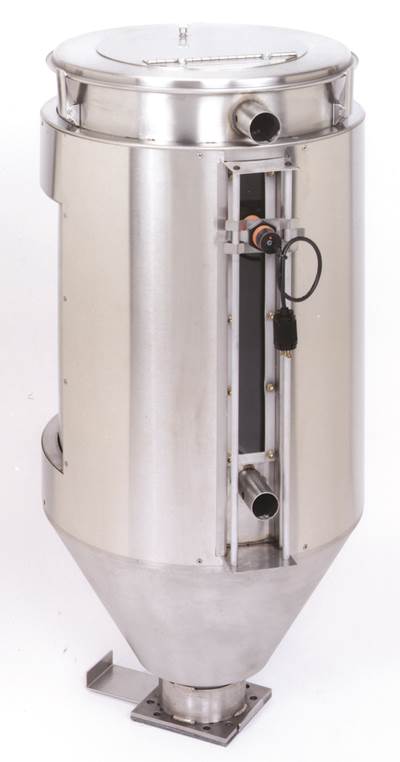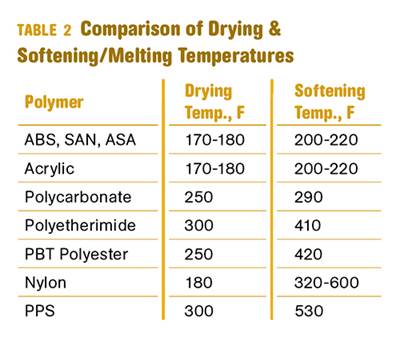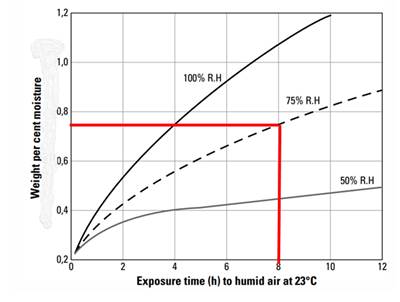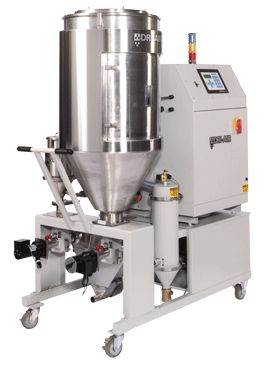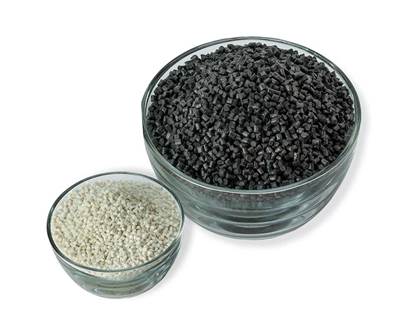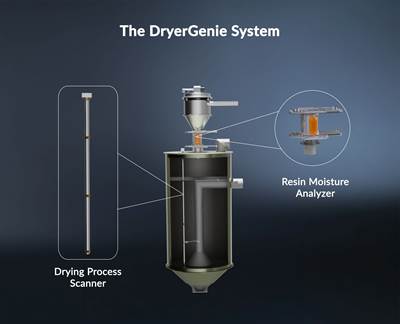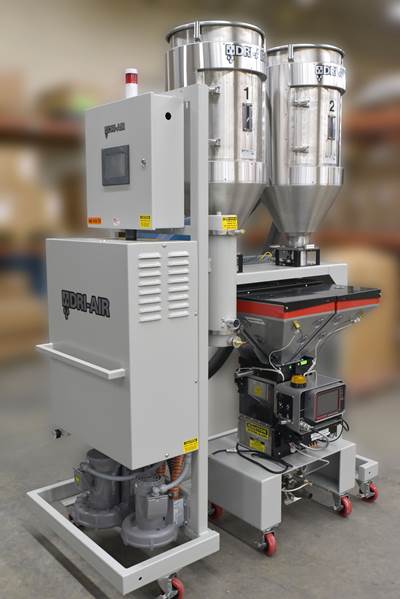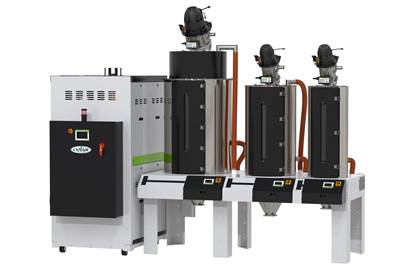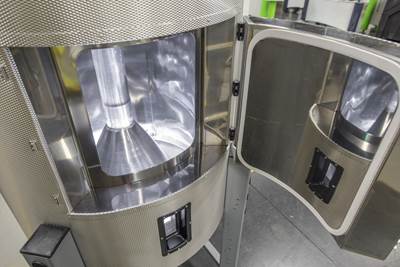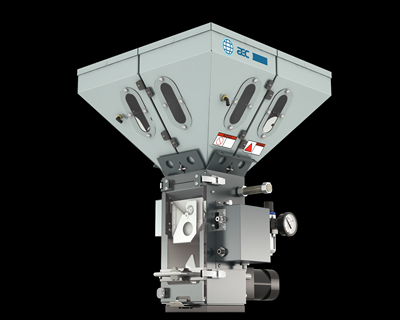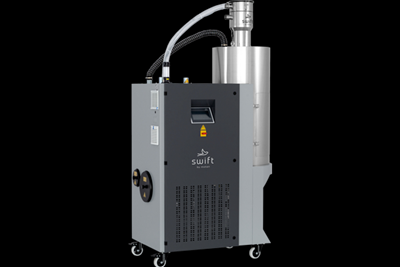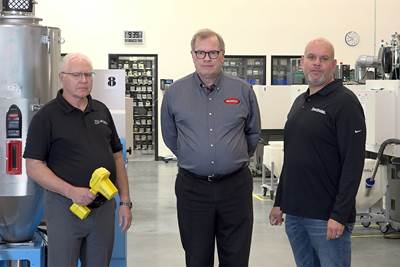Drying
Dryers are used to minimize or eliminate problems that moisture in the plastics cause during processing. Includes resin drying; hygroscopic resins; desiccant dryer; wheel dryer; vacuum dryer; drying PET; drying PC; drying ABS; drying nylon.

ESSENTIAL READING
VIEW ALLBozzelli’s Guide To Specifying a Dryer
Here's a list of 17 things to do when looking for new drying equipment.
Read MoreWhy (and What) You Need to Dry
Other than polyolefins, almost every other polymer exhibits some level of polarity and therefore can absorb a certain amount of moisture from the atmosphere. Here’s a look at some of these materials, and what needs to be done to dry them.
Read MoreFollow These Seven Management Tips for More Consistent Resin Drying
Equipment and advice sure help, but ultimately, good management makes the difference.
Read MoreSpring Tips for Dryer Maintenance
The warm, humid weather really puts a strain on both the regeneration and process, so it is important that everything is in perfect working order. The time to check is now.
Read MoreWhat You Need to Know About Drying Specialty Nylons
PPA is being used more frequently by molders for demanding high-heat applications in automotive and other markets. While in the nylon family, it does not dry quite like nylon. Follow these tips.
Read MoreLatest Drying News And Updates
‘Smart,’ Moisture-Based Drying Technology Enhanced
NPE2024: Novatec relaunches DryerGenie with a goal to putting an end to drying based on time.
Read MoreDryer, Blender for 'Real Time' Regrind Usage
NPE2024: Dri-Air Industries and Maguire Products join forces on the former’s second generation of on-demand drying/blending systems for the circular economy.
Read MoreAI Manages Resin Drying Airflows and Throughputs for Energy Savings
NPE2024: Optional feature automates the process of maintaining process-ready resins at perfect temperatures and varied throughputs, while preventing overdrying and realizing significant energy savings.
Read MoreResin Drying Hoppers Offer More Energy Efficiency, Durability and Cleanability
NPE2024: Drying hoppers provide improved energy efficiency and a durable textured metal exterior finish. Thicker insulation provides a cooler working environment, while polished stainless steel interiors resist material entrapment, and make cleanouts and changeovers faster.
Read MoreMore Efficient, Precise Blending and Drying Solutions
NPE2024: ABS debuts new blending, drying and repelletizing products in Orlando, plus a new color analyzer.
Read MoreRelaunched Chillers, Blenders, Dryers
NPE2024: New auxiliaries from AEC include chiller that meets new standards for refrigerants.
Read MoreFeatured Posts
Novatec Putting the ‘Smart’ In Resin Drying, Conveying
NPE2024: Machine builder gets ‘ludicrous’ by rewriting the rules for material drying and conveying.
Read MoreConnectivity for Material Handling Offers Greater Visibility
NPE2024: Motan solutions integrate data connectivity.
Read MoreCaptive Molder Beefs Up Auxiliaries to Boost Quality, Consistency
SeeScan adds conveying, drying, feeding and chilling technologies to improve quality — and enhance employee safety — in production of its underground/underwater inspection systems.
WatchBozzelli’s Guide To Specifying a Dryer
Here's a list of 17 things to do when looking for new drying equipment.
Read MoreWhy (and What) You Need to Dry
Other than polyolefins, almost every other polymer exhibits some level of polarity and therefore can absorb a certain amount of moisture from the atmosphere. Here’s a look at some of these materials, and what needs to be done to dry them.
Read More15 Headlines I’d Like to See in ’22
Extrapolating from recent news and trends, I twisted the dial from “Reasonable Possibilities” to “A Bit of Fantasy”
Read MoreFAQ: Drying
How to dry resins?
Proper drying requires attention to detail in the following areas: temperature and moisture content (dew point) of the inlet air, volumetric flow rate of the air across the pellets, time the material is in the drying hopper, and temperature of the return air coming back from the hopper to the drying unit. There are other areas of concern related to the design and maintenance of the system. This also assumes that a desiccant dryer is being used.
How can I achieve more consistent resin drying?
-
Control Initial Moisture Levels in Undried Resin
-
Size Dryers Properly
-
Dry at Correct Temperature
-
Keep Drying Hoppers Full
-
Limit Machine-Side Material Inventory
-
Keep Airflow Clean and Consistent
-
Invest in a Moisture Analyzer
Drying Supplier Categories
- Chillers
- Water, Oil Manifolds and Couplings
- Water Treatment/Filtration Systems
- Hot-water or Oil-circulating Temperature Controllers
- Heat-transfer Fluids
- Cold-storage Chambers
- Heat Pipes and Related Thermal Conductors
- Used Molds
- Cooling Towers
- Heaters, Heating Elements
- Used Machinery
- Heat-recovery Systems
- Equipment Cleaning Services
- Heat Exchangers
- Ovens
